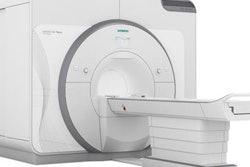Tuesday, November 27 | 10:50 a.m.-11:00 a.m. | SSG10-03 | Room E353A
Clinicians can use virtual reality (VR) and augmented reality (AR) technology to view 3D models of MRI scans during presurgical planning for brain tumor resection, according to this Tuesday session.The researchers, led by Dr. Vinodh Kumar from MD Anderson Cancer Center, sought to uncover the viability of several clinical applications of VR and AR for cases concerning adult cerebral hemispheric glioma. With that goal in mind, they acquired the MRI scans of 1,250 patients with gliomas and evaluated select complex cases with VR and AR using computer software (Radiolog-e, Anatom-e Information Systems).
Kumar and colleagues found that the fully immersive environment of VR was well-suited for preoperative planning, especially for mapping the brain anatomy, surrounding vasculature, and tumor infiltration patterns. AR technology proved to be even better equipped for the task, allowing users to view holograms overlaid onto medical images with superior image quality compared with VR technology.
Unlike the single-user limitation of VR headsets, AR allows for multiple clinicians wearing AR glasses to view 3D images at the same time, which can be valuable for communication among different clinicians, Kumar and colleagues noted.
Furthermore, AR demonstrated the potential to guide glioma resection intraoperatively by displaying 3D models of a patient's MRI scans directly on top of the patient.
"At this time, VR is superior to AR, as it is better established and a stable platform," the researchers concluded. "However, as technology advances, AR will likely overtake VR for preoperative planning of brain tumors."
For attendees hoping for a more interactive experience, the group is also slated to host a hands-on refresher course on this topic on both Sunday evening and Tuesday morning.



.fFmgij6Hin.png?auto=compress%2Cformat&fit=crop&h=100&q=70&w=100)




.fFmgij6Hin.png?auto=compress%2Cformat&fit=crop&h=167&q=70&w=250)











